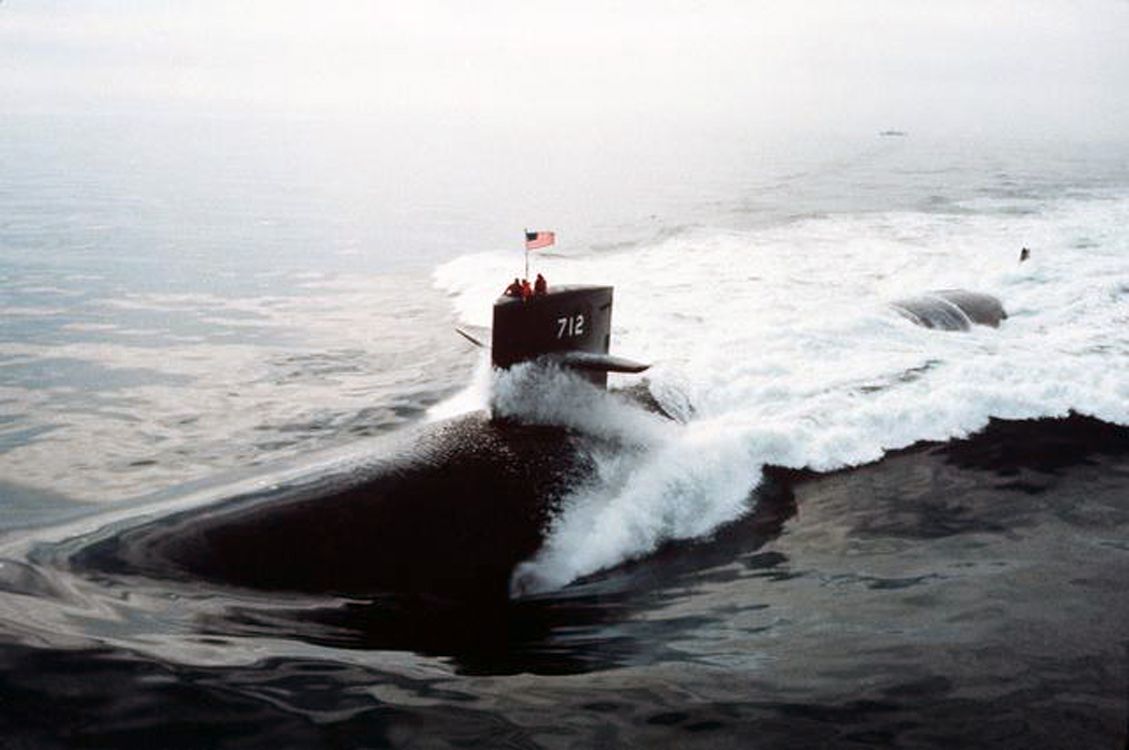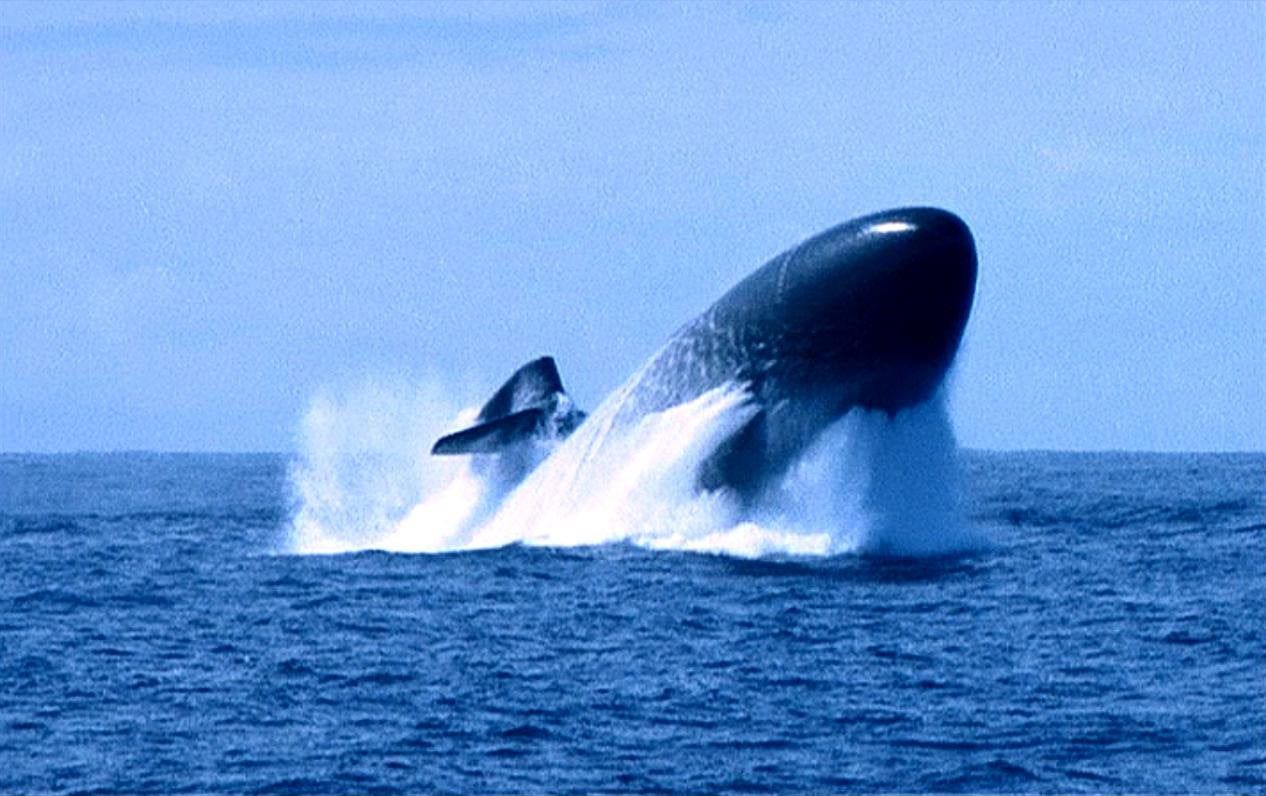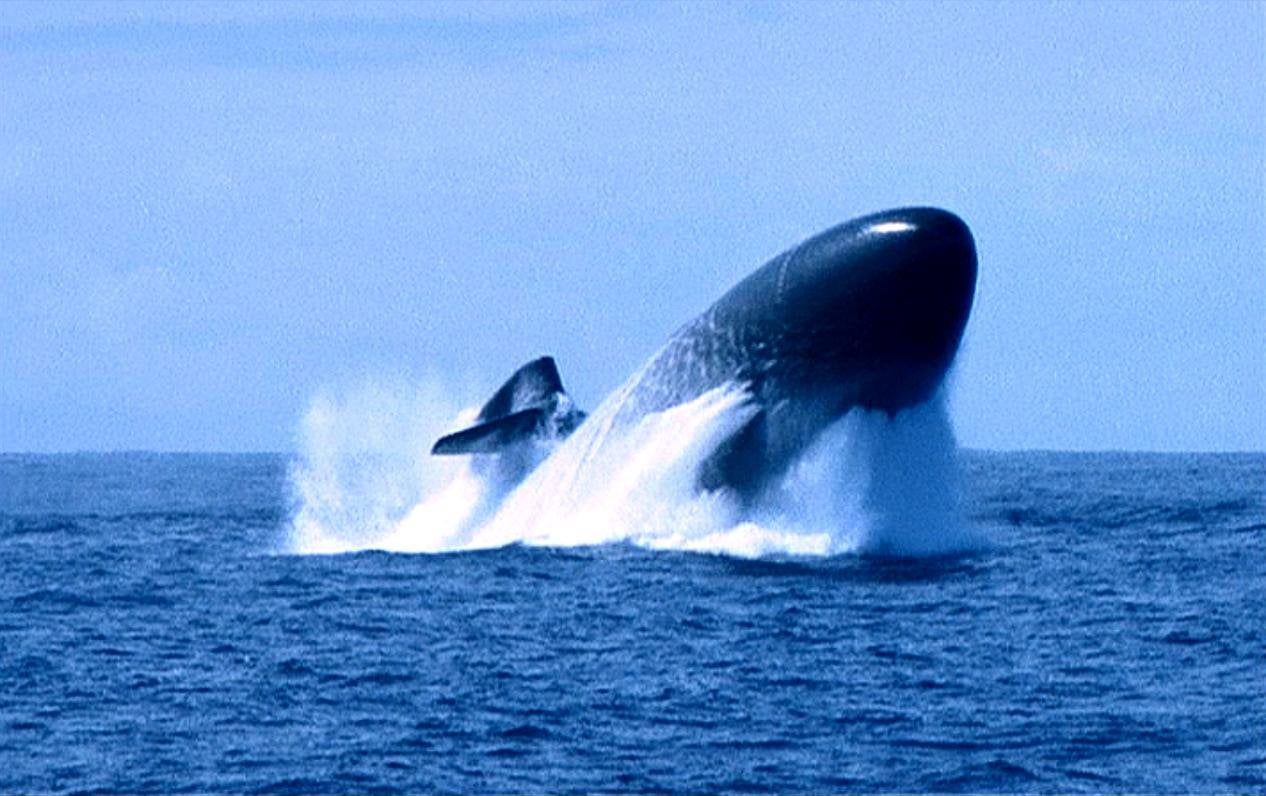We might have been heroes instead of goats had we practiced the art of the turn.
When the skipper emerged from Radio, a message in hand and a grin on his face, his excitement infected us. After many weeks under the Arctic ice maintaining position to destroy an unsuspecting Soviet Delta III ballistic missile submarine should it try to launch missiles at our homeland, the skipper held the prospect of even greater intensity and glory for our crew. “Proceed to the mouth of the Mediterranean Sea with all due speed and await further orders.” Our mission was over. Our disaster began.
U.S. submarines are quiet. Aircraft carriers are about intimidating presence; their purpose is to project power, and they achieve that most effectively by being seen. In contrast, submarines are about stealth; their usefulness to the admiral is in deploying deadly power, unseen. For that reason, submariners don’t race. Like a panther, they prowl at ultra-quiet, rarely surpassing five knots while on a mission. So, when the skipper directed the Officer of the Deck (OOD) to make a southerly course at flank speed, the whole crew knew our new mission was extraordinary.

Later, we learned that our skipper was overeager and in a hurry. Too much of a hurry. To get to our new station as fast as possible, he cut corners. Because he cut corners, disaster struck.
Sometimes we run into shoal waters because of our ineptitude. We choose the wrong course or let our helm drift and don’t steer the course we intend. Sometimes we willfully select an approach that takes us too close to hazards, mistakenly trusting our ability to navigate the dangers. And every good sailor knows that, despite our best efforts to steer a straight course, we can’t reach our destination without taking account of set and drift. For life consists of our ships, destinations, and the tracks we choose to follow and also crossing currents that toss, turn, and push us off the courses of our best intentions.
Discovering we’ve veered off course and even lost our way is part of life’s journey. Sometimes we are the cause; sometimes it’s the cross-currents that slowly cause us to drift off course over time even when our helm seems to be on the bearing we’ve ordered. Losing our bearings is part of the human condition. As St. Paul laments, we don’t mean to, but we can’t help it (Romans 7:15-20). Whatever the cause, veering off course is an unavoidable part of life that can lead to calamity.
Recognizing this, the prudent mariner practices the art of the turn. The turn consists of three steps: pause, listen, and go. Those steps are where my skipper cut corners. That’s how his moment of glory became his moment of shame.
The first step in the art of the turn is to pause for safe navigation. The fool, trusting his compass, only pauses when circumstances reveal he has missed the mark. In humility, the wise traveler considers both the probability of navigational error and the effects of external currents and builds time to pause into his journey.
While traversing the seas, U.S. submarines habitually pause for safe navigation at least every other watch. That pause entails a high yet justifiable cost. It takes time away from one’s mission. It requires the sub to temporarily pivot away from the bearing leading to its destination towards the course most appropriate for periscope depth operations. It requires the sub to change its depth from the optimal depth for cruising to the much more vulnerable depth that allows the periscope to rise above the stormy seas. It requires time to proceed to and from that vulnerable position. And, while there, it requires an intense period of sitting in that vulnerability to assess one’s historic track and current position. Yet the wise skipper bears the cost of periodic excursions to periscope depth because that pause is the first step in the art of the turn that ensures safe navigation.
That pause makes possible the second step, which is to listen. We listen to calibrate our understanding of where we are to determine the course adjustments needed to take us where we want to go.
To listen is to pay attention to something external to us. To determine a ship’s location when close to land, mariners pay attention to the information provided by external objects such as lighthouses, buildings, and geographic features. The intersection of plotted bearings to any three external things helps one verify one’s position. At sea, where such landmarks are not visible, we pay attention to input from satellites that tell us their geo-position, which allows us to compute ours. We listen, and celestial bodies tell us where they are, and we discover thereby where we are.
Listening so that one accurately comprehends one’s location is essential before taking the third step in the art of the turn, which is to go. Reoriented, the mariner makes the course adjustment needed to redirect the ship to his destination. “Left 15 degrees rudder. Make your course 177.” Usually, a minor adjustment is all that’s needed to get back on the right track.
Going is easy when one practices the art of the turn because the intentional rhythms of pausing and listening keep one mostly on the right track with only minor course corrections needed. Going can be hard, however. The longer we veer off the right track, the larger the course corrections required and the further we travel from our objective. Sometimes, the correction needed is a complete reversal of the course we’ve enjoyed. Sometimes, the magnitude of the adjustment required is so great that it overwhelms us or immobilizes us with uncertainty about the best way forward. Going can be challenging because the course corrections needed can take us out of our comfort zone. Yet going in the right direction, even turning around when necessary, is the whole point of the art of the turn.
Our skipper was a man on a mission, and he was in a hurry to get to our new station. To do so, we had to travel over 2,100 miles as quickly as possible. Out in the open ocean, cruising at flank speed, he decided to cut back radically the frequency of operations at periscope depth. Rather than pausing, listening to the satellites, and correcting our course multiple times daily, we raced southward unrelentingly at flank speed, checking our position infrequently, and adjusting our course based on the guidance of the ship’s inertial navigation systems.
In other words, rather than querying the heavens to confirm we were on the right track, we cruised more swiftly southward by estimating our position using our internal guidance systems. For long periods of our southward journey, we were self-referential and self-validating, and that made all the difference.

We arrived on station just west of the Strait of Gibraltar ahead of schedule. At last, the skipper shared the details of our new mission. Our submarine was the Navy’s test platform for the Tomahawk cruise missile. For more than a year, we had practiced and mastered its deployment. Now, we would be the first submarine ever to attack an enemy target with a Tomahawk. Our orders were to transit the Strait of Gibraltar undetected and then join the flotilla gathering within striking distance of Northern Africa.
The Strait of Gibraltar, the entrance to the Mediterranean Sea, is about eight miles wide at its narrowest point. To the south is Morocco of the African continent, and to the north is Spain of the European continent. It is one of the busiest waterways in the world. Transiting it on the surface was always a challenge; traversing it submerged was nerve-wracking.
I was the oncoming Officer of the Deck (OOD) when we transited. An Annapolis classmate was on the conn when I began my pre-watch tour. Having just completed my tour, I stopped in the head before starting our formal watch turnover. That’s where I was when the collision alarm sounded. At first, I assumed we had collided with a merchant. Yet, as I rushed to my battle station, I heard the emergency blow and felt us rising to the surface. I knew then we had not collided with a merchant. We had run aground.
The debrief later showed that our navigational error compounded daily as our skipper raced ahead without pausing, listening, and going along corrected bearings to our station. Without any feedback from the satellites, our internal guidance systems were off. When we ran submerged straight into the coast of Spain, our skipper thought we were two miles south in the Straits of Gibraltar.
The commodore flew across the Atlantic to strip the skipper of his command. As a lone bugle played a dirge, the commodore ripped off his epaulets, broke his sword in half, and punched a hole in his hat. That’s not what happened, of course, but that’s how it felt. The skipper was just three months short of twenty years when they forced him out of the Navy. Tragic. And all because he neglected the art of the turn.
When I was a graduate student at Duke, I attended an evening gathering at North Carolina State University to hear a prominent Christian evangelist. He was charismatic, compelling, and inspired a large group of folks to respond to his call for conversion at the end of his talk. I don’t remember much of what he said, but I do recall his calls for repentance. He wasn’t a fire and brimstone preacher, but he shared with that genre a strong emphasis on repentance as a radical event associated with conversion to Christianity. Today, I’d challenge his teaching on two grounds.
First, his account of the repentance needed suggested that any authentic conversion was preceded by a wake-up call on the scale of Ebenezer Scrooge’s great turn to joyful generosity on Christmas morning. I appreciated his explanation that ‘repent’ means “to turn around.’ But not all of us require a 180-degree turn to step firmly onto the Way of Love. The symphony of God’s Word spoken through the splendor of creation has inspired in many the habits of thought and practices that are perfected along the Way of Love. For them, a less radical course correction is required because, though they did not know His name, they were already learning to navigate by the Light of the Rising Star, who preveniently drew them closer and prepared them for their great embarkation. For some, the repentance needed at conversion is simply that slight turn to the left that brings into sharper focus the face of the One who already walks alongside. Eyes opened, they are at last able to call him by name and commit themselves to follow him as they journey along his Way of love.
That brings me to my second challenge to that preacher’s emphasis on repentance as a one-time event that precedes our journey. Yes, conversion is necessary, but it is only our point of embarkation. It’s when we board the boat. The journey remains. The seas of chaos and disorder still rage; the crossing currents and storms of life still drive us off course; we simultaneously are souls securely aboard the ship of salvation and souls whose deliverance and completion are works-in-progress. We drift off course. We lose sight of the Rising Star. We willfully steer off course. We get lost. That’s why repentance cannot merely be a one-time thing we do before we embark on the journey. Repentance is essential to daily navigation. Every hour of every day of every month of every year of our lives along the Way, we face opportunities to veer off course, and we do. That’s why the art of the turn is an everyday practice of the wisest on board.
We pause, making time to ask God to create clean hearts within us (Ps 51). We listen, verifying our location along the Way of Love by plotting the intersection of our lives with the Word manifest in the life of Jesus. And, correcting our course as necessary to get back on track, we go, trusting in God to protect and sustain us, especially when such change is hard.
When we practice the art of the turn, we stay on course along the track that leads to still waters. The Way of love. Along this Way, we learn to become the beloved people God created us to be.

